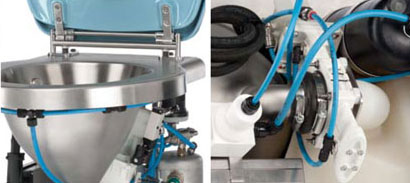NEW DELHI: The railways has launched the trial run of vacuum toilet on Dibrugarh Rajdhani. Vacuum toilet is a first in Indian railways. It is fitted in the AC coaches at an estimated cost of about Rs 3 lakh. The vucuum toilet has also the bio-digester system. Vacuum toilets are currently operational in aircraft only.

The railways plan to initially install 80 such toilets on Shatabdi Express trains. The railways has floated global tenders for installing the toilets at a cost of Rs 25 crore. Multinational companies from Germany, USA, Denmark and Spain have evinced keen interest in manufacturing and installing the system, officials said.
The vacuum toilets use less water than conventional toilets. These toilets would also help prevent corrosion of the rail tracks. A vacuum toilet is proposed for New Delhi station aso.
Rajdhani and Shatabdi are equipped with controlled discharge toilet system. “Waste is automatically discharged after trains gather a minimum speed of 30 km per hour,” the officials said.
The railways has replaced 17,388 conventional toilets with bio-toilets. About 17,000 more will be replaced by the end of this year.
Vacuum toilets are flush toilets that use suction for the removal of faeces and urine resulting in a minimal requirement of water (0.5 to 1.5 litres). Vacuum toilets are comfortabe like the traditional flush toilets. They also help saving costs due to the minimised amount of flush water. Its microprocessor-controlled system is compact and space saving design. Quick and easy installation. The bowl is flushed with high pressure water.
So claims the manufacturers.
HOW VACUUM TOILET WORKS: When flushed, compressed air flows through the vacuum pump (ejector) and a vacuum is created in the middle tank. The bowl is the rinsed. The inlet valve opens and the content is discharged into the middle tank. When the valve closes, the system creates over-pressure in the middle tank. The outlet valve opens and the content is transported to the waste water tank.